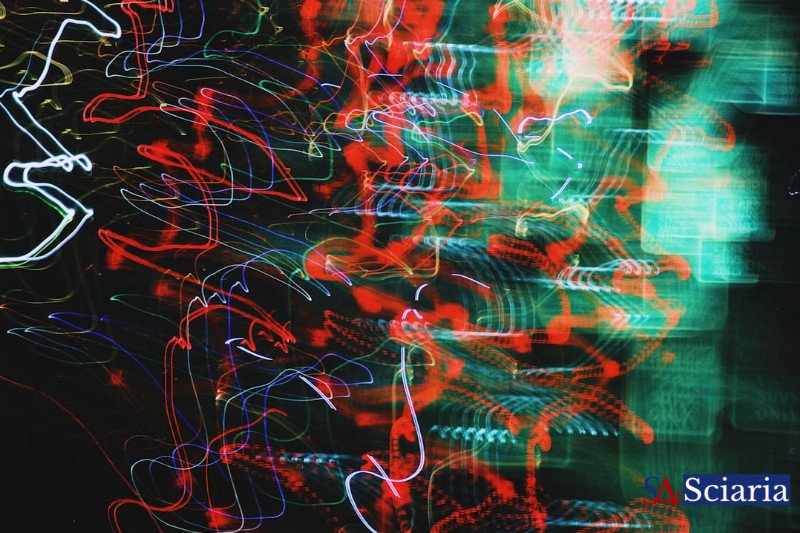Is Electro Music the New Classical? Deconstructing Digital Art
- Sciaria
- Electro
- Oct 14, 2025
- 0 Comments

For centuries, classical music reigned supreme as the epitome of artistic sophistication, intricate composition, and emotional depth. Its symphonies and concertos were considered the pinnacle of musical achievement. But in an increasingly digital world, a new contender has emerged, challenging traditional notions of musical artistry: electro music. Could the pulsating beats, complex soundscapes, and innovative structures of electronic music truly be the classical music of our modern age?
At first glance, the two genres might seem worlds apart. One evokes images of grand concert halls and orchestral precision, while the other brings to mind vibrant festivals and cutting-edge technology. However, a deeper dive reveals striking parallels. Modern electro composers, much like their classical predecessors, meticulously craft their pieces. They employ sophisticated harmonic progressions, dynamic variations, and intricate rhythmic patterns, often building expansive sonic journeys that demand attention and evoke profound emotional responses. The 'digital' aspect isn't a limitation but a vast palette, allowing for unprecedented sound design and structural experimentation, akin to how new instruments or compositional theories expanded classical music's scope.
Consider the innovation. Classical composers pushed boundaries with new instruments, harmonic theories, and structural forms. Electro artists do the same, but their tools are synthesizers, samplers, sequencers, and digital audio workstations. They are sonic architects, sculpting waveforms and crafting entirely new textures. This meticulous 'digital art' is not accidental; it’s a deliberate act of creation, demanding a profound understanding of acoustics, music theory, and technological mastery. Tracks can be as structurally complex as a sonata, with distinct movements, motifs, and narrative arcs, often requiring an attentive ear to fully appreciate their genius.
Furthermore, both genres have experienced a journey from niche appreciation to broader cultural impact. Classical music, once largely the domain of nobility, eventually became a public art form, studied and revered. Electro music, born in underground clubs and experimental scenes, has similarly blossomed into a global phenomenon, influencing pop culture, film scores, and art installations. Its academic study is growing, with universities offering degrees in electronic music production and sound design, validating its artistic and intellectual merit. The perception is shifting; what was once dismissed as simple 'dance music' is now increasingly recognized for its intricate compositional demands.
Ultimately, to ask if electro music is the 'new classical' isn't to replace one with the other, but to acknowledge the evolving definition of classical artistry. It’s a recognition that digital tools can facilitate creations of immense beauty, complexity, and enduring cultural value. Electro music, with its profound artistic depth and innovative spirit, undeniably stands as a significant and sophisticated form of digital art, deserving of the same critical respect and admiration historically afforded to its acoustic ancestors.
Comments (0)
Rate This Blog
Top Blogs by Rating
Unveiling the Hidden Journeys:...
By Sciaria
Unleash Your Inner Explorer: T...
By Sciaria
The Silent Language of Your Bo...
By Sciaria
Favorite Blog
Is Electro Music the New Class...
By Sciaria
The Geological Secret in Your...
By Sciaria
The Unspoken Wisdom: Embracing...
By Sciaria
Related Research
Preservation of newspaper clippings from csis (centre for strategic and international studies) collection at the national library of the republic of indonesia
The effect of interactive mutimedia based on articulate storyline 3 on student learning outcomes in elementary schools
Analyzing the total resistance and wave pattern of purse seine vessels with photovoltaic-powered
Share
Notice Board
- PENGUATAN KEMANDIRIAN EKONOMI DAN AKSELERASI PENCAPAIAN SUSTAINABLE DEVELOPMENT GOALS DESA SUMBER SALAM KECAMATAN TENGGARANG BONDOWOSO MELALUI SUSTAINABLE LIVELIHOOD APPROACH
- THE CRITICAL THEORY OF LINGUISTICS BETWEEN CULTURAL AND COGNITIVE SCIENCES AND THE BIOLOGICAL BASIS OF LANGUAGE
- ARCHEOLOGIA E STORIA DELL’ARTE AD ACCESSO APERTO PER INTERPRETARE LE MISSIONI DELL’UNIVERSITà





